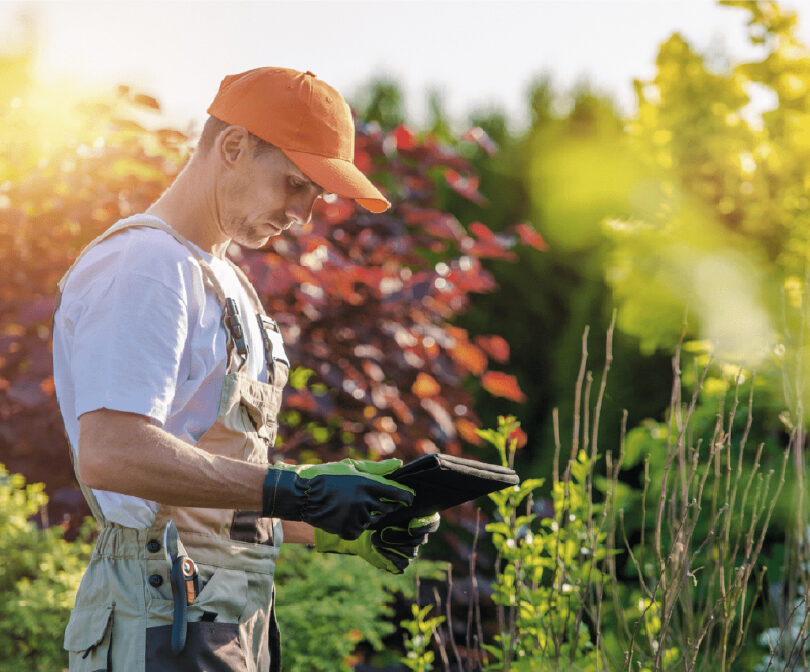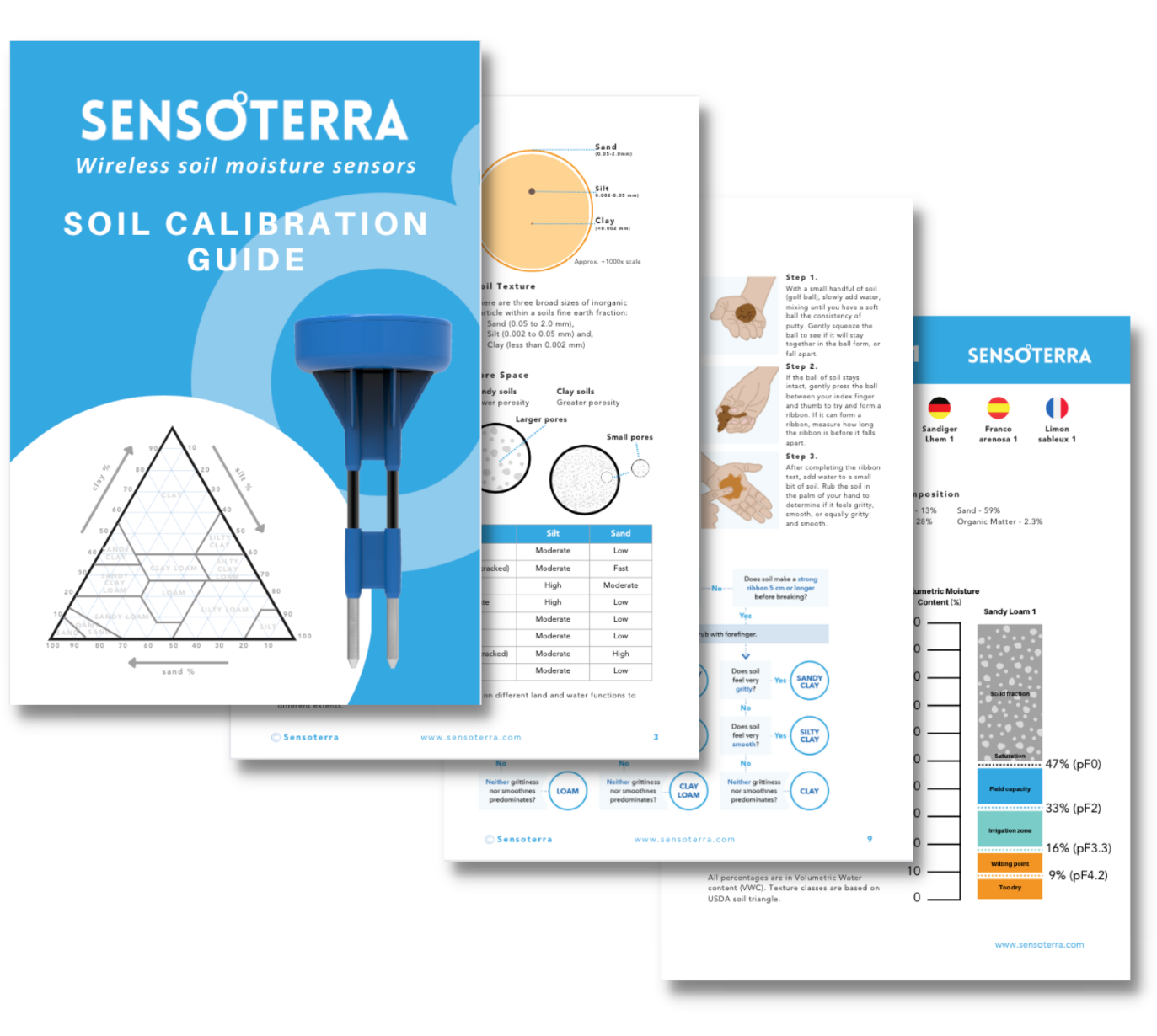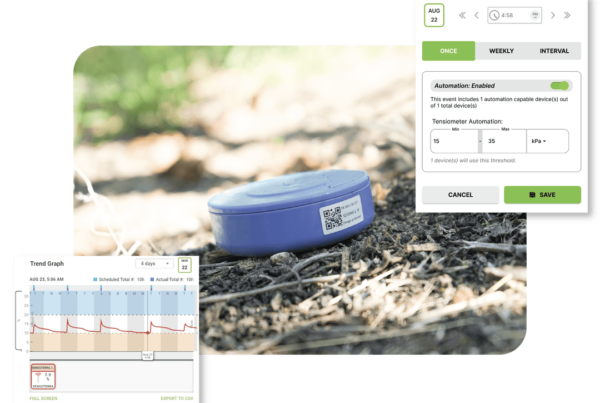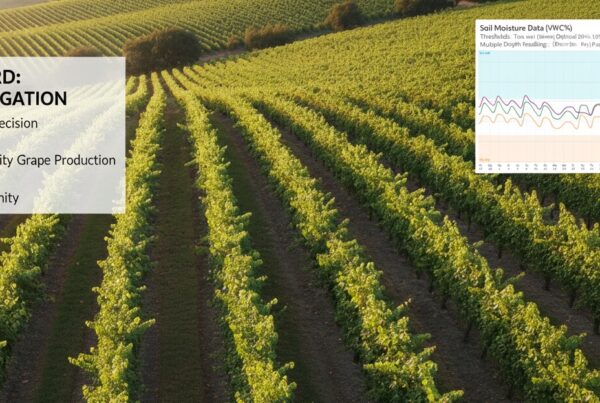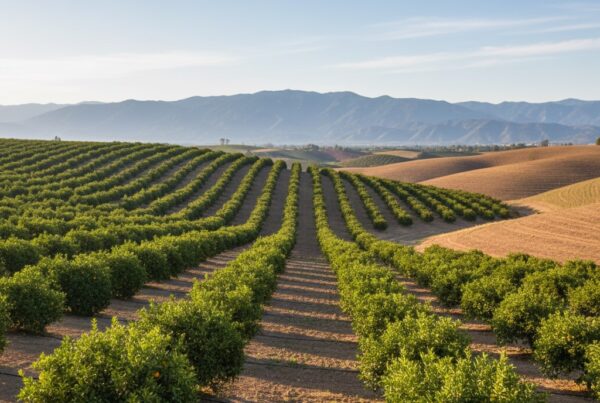Soil moisture sensors are powerful tools for smarter water management—but like any precision instrument, the quality of the data depends on proper installation, correct soil calibration, and interpretation. At Sensoterra, we’ve designed our sensors to be simple, scalable, and highly accurate (99.5% calibrated accuracy across more than 50 soil types). Still, if your readings look unusual, there are a few common risks to be aware of—and easy fixes you can apply.
Poor Contact With the Soil
If a probe doesn’t have good soil contact, the readings may not reflect the true conditions. Here’s what typically happens:
- When it’s dry → readings appear too low because the sensor is measuring too much air.
- When the soil is saturated → readings appear too high because those air gaps are filled with more water than the soil can usually hold.
Quick Fix: Re-install in less than a minute
Single depth sensors can simply be removed and reinstalled a few feet away, hammered in with a rubber mallet.
Multi-depth sensors require a pilot hole (pre-drill with a 1” auger, handheld drill), with a rubber mallet hammer it into the pilot hole, remounting the antenna, and a slurry mixture to ensure soil contact. Reinstalling in a new spot often resolves anomalies.
Preferential Flow Channels
Water in the soil doesn’t always move evenly- it can travel down drying cracks, wormholes, or root paths. These “preferential flow channels” can cause irregular readings, this can occur particularly in multi-depth probes where soil contact may vary at different layers based on texture changes.
If this happens, the solution is often as simple as reinstalling the probe, and/or flooding it with a slurry to ensure soil contact.
Soil Type and Calibration
One of the most important aspects of accurate soil moisture data is correct calibration. If the wrong soil type is selected, the thresholds for field capacity (too wet) and plant stress (too dry) won’t match your field reality.
Soil maps are a helpful starting point, but they are not always exact. For more reliable results, soil sampling and lab analysis are recommended. We regularly work with Eurofins soil lab to provide detailed texture data. This allows you to verify unexpected readings and better understand what’s happening underground.
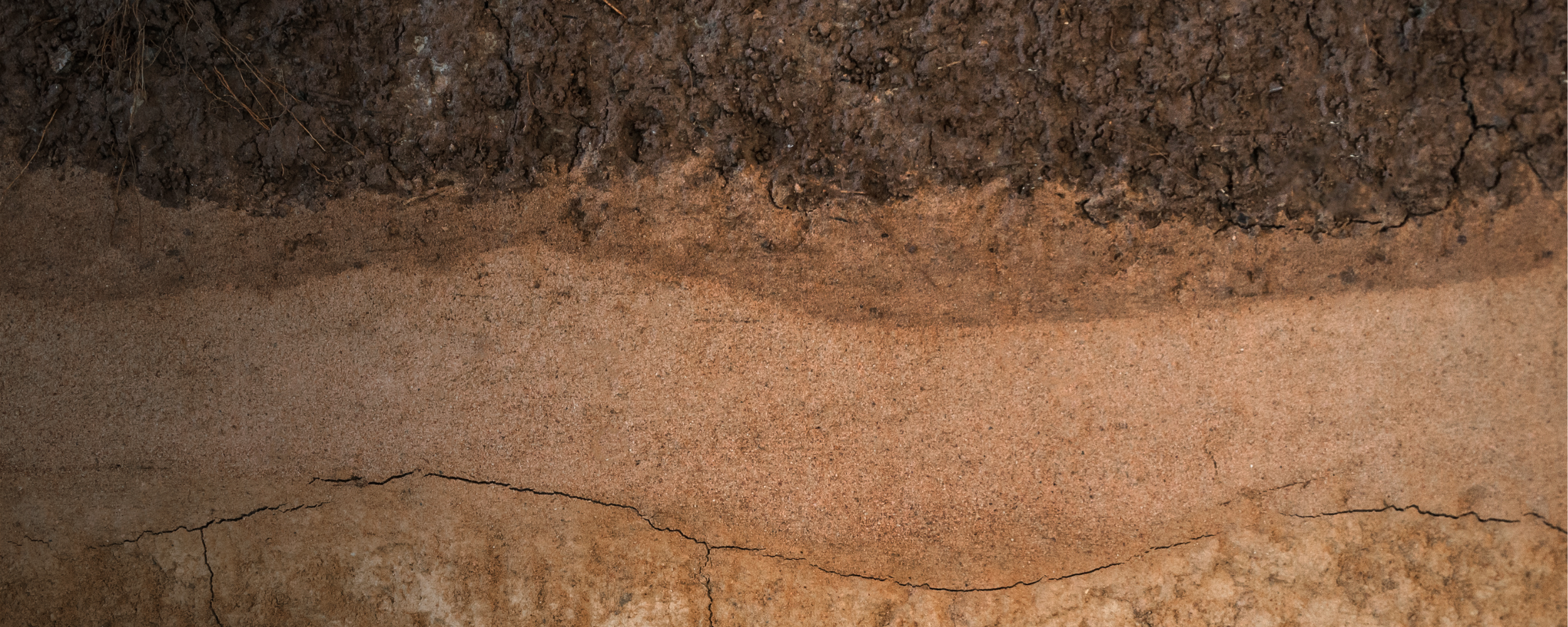
This is why it’s so important to know your soil texture. Selecting the right calibration from Sensoterra’s library, or contacting our lab for guidance, ensures your data aligns with your crop yield targets, soil health practices, and water conservation goals.
Why Calibration Matters More Than You Think
Soil moisture sensors measure capacitive resistance, which is then converted into volumetric water content (%). But interpretation is where many systems differ.
-
Many providers only calibrate to field capacity and offer a broad range for the lower limit. This means you never truly know the “plant stress” point, which makes irrigation scheduling less precise.
-
With Sensoterra, every sensor comes factory-calibrated for over 50 soil types. We provide thresholds for both field capacity (upper limit) and plant stress (lower limit)—the full plant available water range.
This difference is critical: knowing both limits helps farmers not only maximize yield volume but also optimize crop quality, soil health, and water conservation. Without that information, irrigation may prevent crop loss, but it won’t necessarily improve crop performance or optimize water use.
Sensoterra Lab
To be able to support every soil type available is exactly why we’ve set up the Sensoterra Soil Lab. It’s here, where we test soil samples taken from participating customers, to better identify both soil texture profile, and soil moisture behavior. By calibrating the sensors to a specific soil type, soil moisture readings will be more precise.
The result is a calibration based on that specific soil type, so that future sensor readings can be closely correlated to the actual behavior of the soil with different levels of moisture,
We make the calibration of that soil type available for all within Sensoterra Monitor, so all users can benefit from the research at the Sensoterra Lab.
The vast majority of our customers can select a suitable soil type from the Sensoterra soil library. We use the Soil Triangle principles for identifying the soils which are included in the library, and are continually expanding our standard calibrations to offer even more precise moisture data.
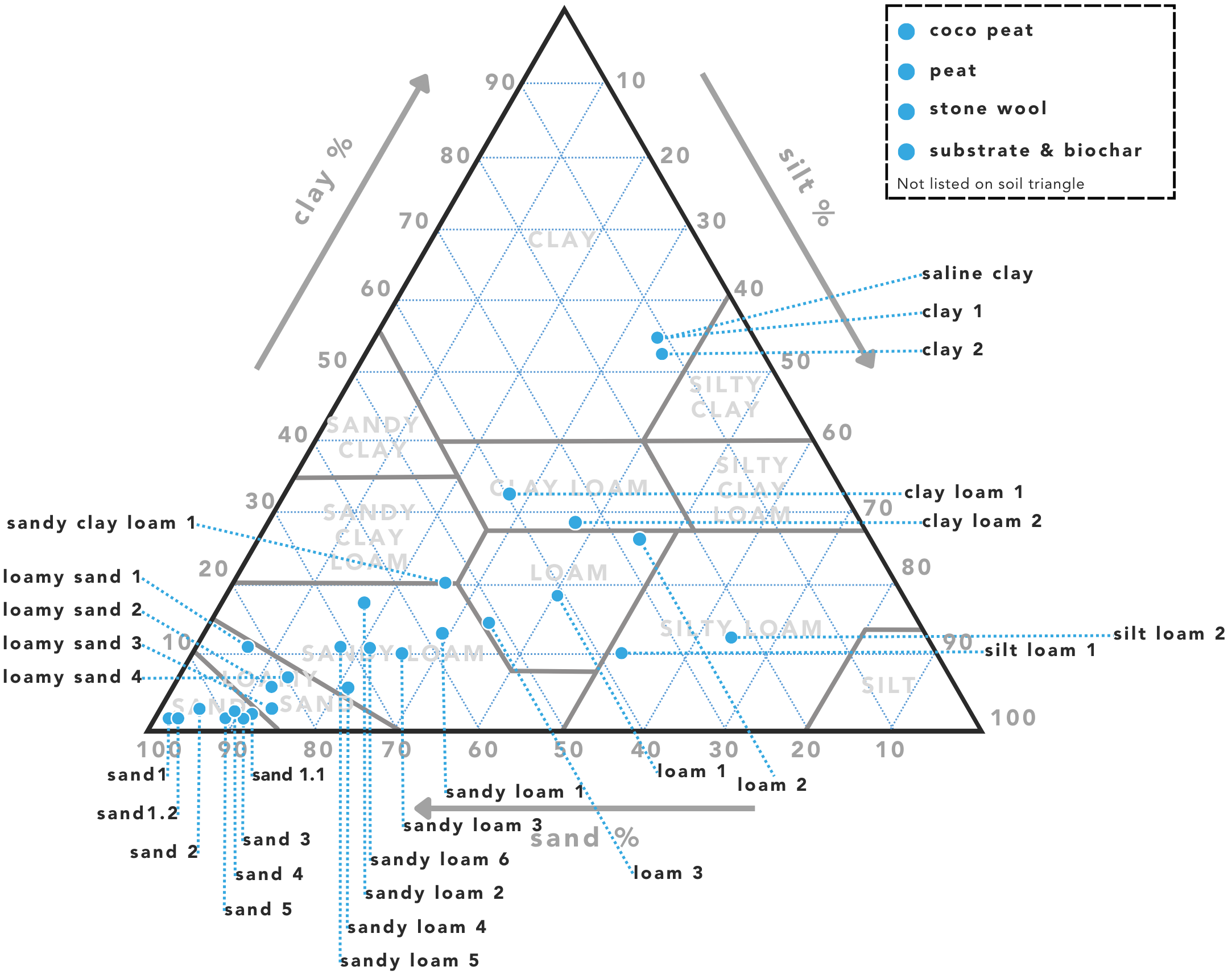
Visit our calibration page to learn more about the calibration process and the Sensoterra soil calibration library.
The Bottom Line
If you’re seeing unusual soil moisture readings, don’t worry- it usually comes down to soil contact, preferential flow, or calibration. Most issues can be solved by reinstalling the sensor or confirming your soil type.
With Sensoterra’s robust calibration library and expert lab guidance, you gain more than data, you gain confidence. Every sensor delivers accurate, actionable insights that let you irrigate with precision, protect soil health, and conserve water without guesswork.
Soil Calibration Guide
To help support you decisions for placement of sensors based on soil type and soil moisture behavior, we’ve put together a free Soil Calibration Guide.
Visit our calibration page to learn more about the calibration process and the Sensoterra soil calibration library.
About Sensoterra
Sensoterra takes the lead in wireless soil moisture sensor technology, offering cutting-edge IoT solutions for smart agriculture. Our state-of-the-art moisture sensors are pioneers in the field of soil moisture monitoring. We are committed to revolutionizing precision agriculture, helping farmers optimize their irrigation systems and promote sustainable farming. With Sensoterra, you gain real-time access to critical soil moisture data, empowering you to manage water resources with precision. Established in 2015 and headquartered in Houten, The Netherlands, Sensoterra develops innovative water management solutions for agriculture, horticulture, smart city management, and water governance. Our global network boasts over 12,000 moisture probes in the ground, generating an abundance of data points daily. Jessica Nuboer Marketing & Communications Sensoterra Email: [email protected]

